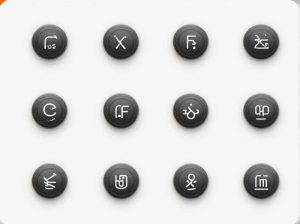Electrical conductivity is a crucial property in materials science and chemistry. Some substances allow electricity to flow freely while others act as insulators. The type of chemical bond in a material plays a major role in determining whether it conducts or resists electricity.
In this topic we will explore the types of chemical bonds that do not conduct electricity why they lack conductivity and where they are commonly found.
What Makes a Bond Non-Conductive?
A chemical bond is non-conductive when electrons are tightly held and cannot move freely. Electrical conductivity requires the movement of free electrons or ions which is common in metallic and ionic compounds in solution. However some bonds do not allow this movement making them insulators.
Types of Bonds That Do Not Conduct Electricity
1. Covalent Bonds (Molecular Compounds)
Covalent bonds form when two nonmetal atoms share electrons instead of transferring them. Since no free electrons or mobile ions exist in covalent compounds they do not conduct electricity in most cases.
Examples of Non-Conductive Covalent Compounds
✔ Water (H₂O) – Pure water does not conduct electricity because it lacks free ions.
✔ Oxygen (O₂) and Nitrogen (N₂) – These gases consist of covalently bonded molecules that do not conduct electricity.
✔ Carbon Dioxide (CO₂) – The strong covalent bonds in CO₂ prevent the movement of charge.
✔ Glucose (C₆H₁₂O₆) – Organic molecules like sugars are non-conductive because they do not dissociate into ions.
2. Network Covalent Bonds (Giant Covalent Structures)
Network covalent compounds consist of a continuous three-dimensional lattice of covalently bonded atoms. These structures are strong rigid and excellent insulators due to their fixed electron positions.
Examples of Non-Conductive Network Covalent Compounds
✔ Diamond – Composed of carbon atoms in a strong tetrahedral structure making it an excellent electrical insulator.
✔ Quartz (SiO₂) – Silicon dioxide is a common insulator used in electronics.
✔ Boron Nitride (BN) – Often used as an electrical insulator in high-temperature environments.
3. Ionic Bonds in Solid State
Ionic bonds form when electrons are transferred from one atom to another creating positive and negative ions. While ionic compounds can conduct electricity in a liquid state or solution they do not conduct electricity in solid form because the ions are locked in place within a crystal lattice.
Examples of Non-Conductive Ionic Solids
✔ Sodium Chloride (NaCl) in solid state – Table salt does not conduct electricity until dissolved in water.
✔ Magnesium Oxide (MgO) – A strong ionic compound that acts as an insulator in solid form.
✔ Calcium Fluoride (CaF₂) – Used in optics and electrical insulation.
4. Van der Waals Bonds (Molecular Solids)
Van der Waals forces are weak intermolecular attractions that hold molecules together in solid or liquid forms. Since these forces do not involve free electrons or ions materials held by Van der Waals forces are non-conductors.
Examples of Non-Conductive Molecular Solids
✔ Solid Carbon Dioxide (Dry Ice) – Weak forces between CO₂ molecules make it a non-conductor.
✔ Wax – Composed of hydrocarbon molecules held by Van der Waals forces.
✔ Iodine Crystals (I₂) – A molecular solid with weak intermolecular forces and no free charges.
Why Some Materials with Covalent Bonds Can Conduct Electricity
1. Graphite – An Exception in Covalent Bonds
Unlike diamond graphite (another form of carbon) does conduct electricity because it has delocalized electrons in its layered structure. These free-moving electrons allow graphite to function as a conductor despite having covalent bonds.
2. Dissolved or Molten Ionic Compounds
While solid ionic compounds do not conduct electricity they become conductors when dissolved in water or melted. This is because the ions become free to move allowing electrical flow.
✔ Example: NaCl in water conducts electricity but solid NaCl does not.
Applications of Non-Conductive Materials
Non-conductive materials are essential in insulation electronics and construction. Here are some of their key applications:
1. Electrical Insulators
✔ Rubber and Plastic – Used to coat wires and prevent electrical shocks.
✔ Ceramics – Used in high-voltage insulators.
2. Optical and Structural Materials
✔ Quartz (SiO₂) – Used in optical fibers and glass production.
✔ Diamond – Used in cutting tools and optical applications.
3. Protective Coatings
✔ Teflon (PTFE) – A non-conductive polymer used in cookware and industrial applications.
The type of chemical bond in a material determines whether it can conduct electricity. Covalent bonds network covalent structures solid ionic compounds and Van der Waals forces result in non-conductive materials because they lack free electrons or mobile ions. These materials play a crucial role in electrical insulation structural applications and protective coatings.
Understanding non-conductive bonds helps in material selection for various industries ensuring safety and efficiency in electrical and mechanical applications.



